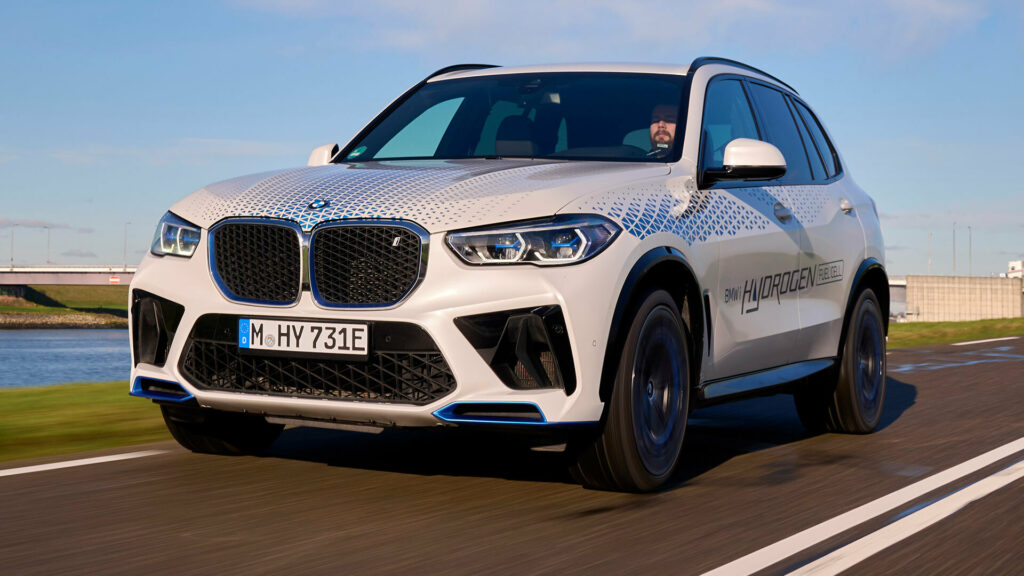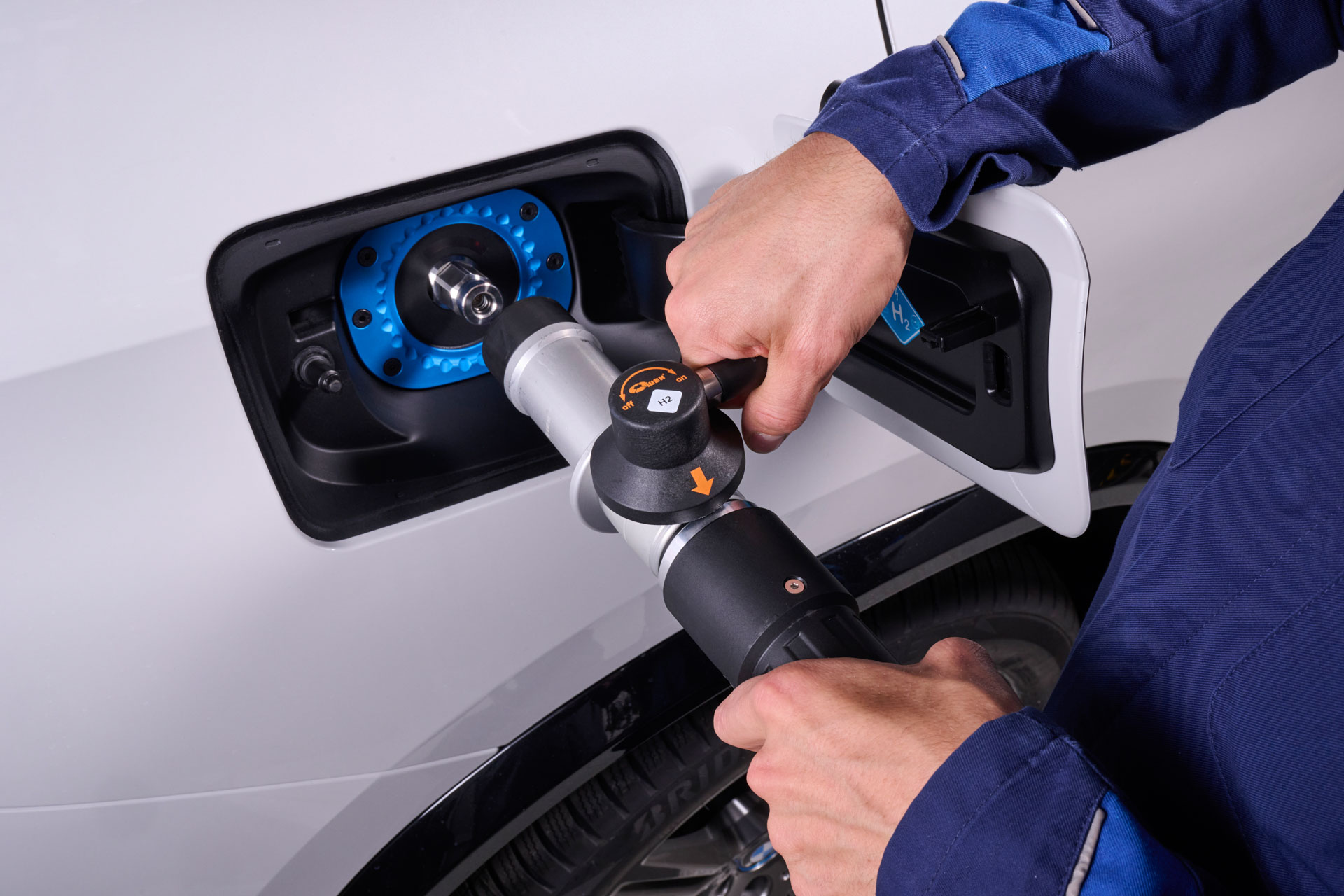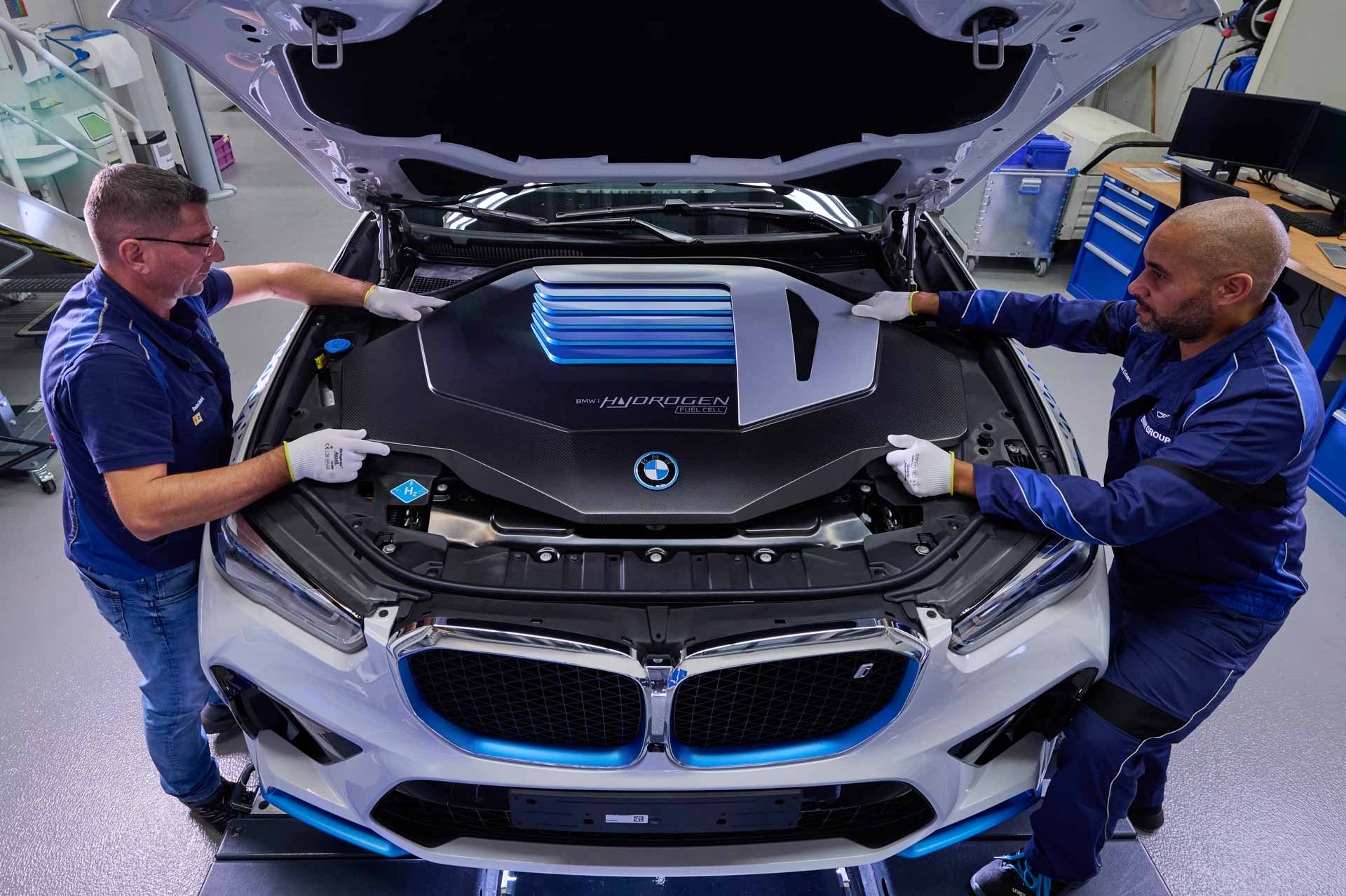- BMW is teaming up with Toyota to put a hydrogen car on sale in 2028.
- The pair will share powertrain tech, with BMW confirming it won’t be a face-swapped Toyota.
- BMW has been testing its iX5 Hydrogen prototypes and the first H model is likely to be a next-generation X5.
BMW has been talking about hydrogen power for years, and now it’s finally committed to putting a fuel-cell vehicle on sale. The German automaker says it’ll deliver its first FCEV in 2028, and it’ll do it by joining forces with Toyota.
The German automaker has already extensively tested its fleet of iX5 Hydrogen SUVs that use fuel cells from the Japanese firm. But Toyota itself has vastly more experience, having introduced the fuel-cell-powered Mirai sedan a decade ago.
Related: BMW And Toyota Expand Their Partnership To Save Hydrogen Cars
Exact details about what BMW’s first fuel cell vehicle will look like, how much power it will make, and how far it will travel on a tank of hydrogen are still under wraps at this early stage. But BMW does say that its first FCEV won’t be a rebadged Toyota, and neither will it share a platform, as the duo’s Z4 and GR Supra do.
Instead, BMW will take the jointly-developed third-generation hydrogen powertrain and use it into one of its own vehicles – a modified version of a regular BMW model.

And given that it’s worked so hard to promote its iX5 Hydrogen test fleet over the past few years, it seems logical that the X5 will be the first to get the tech. But if it is, it won’t be the current X5, which is due for replacement in the next couple of years, but that SUV’s replacement.
We’ve already seen spy shots of the next X5, intel suggesting it uses an updated version of today’s CLAR platform rather than the next-generation Neue Klasse hardware BMW will introduce on the iX3 and 3-Series in 2025 and 2026.
Today’s iX5 Hydrogen prototype features a front-mounted fuel-cell stack and two hydrogen tanks located in the transmission tunnel and under the rear seats. It makes 396 hp (401 PS), accelerates to 62 mph in less than 6 seconds, and has a range of 313 miles (504 km), though all of those numbers are sure to improve by the time the real thing lands in 2028.
The iX5 Hydrogen also refuels in around three minutes, giving it a practical advantage over EVs – albeit one nixed by the dearth of available hydrogen filling stations in many countries.














